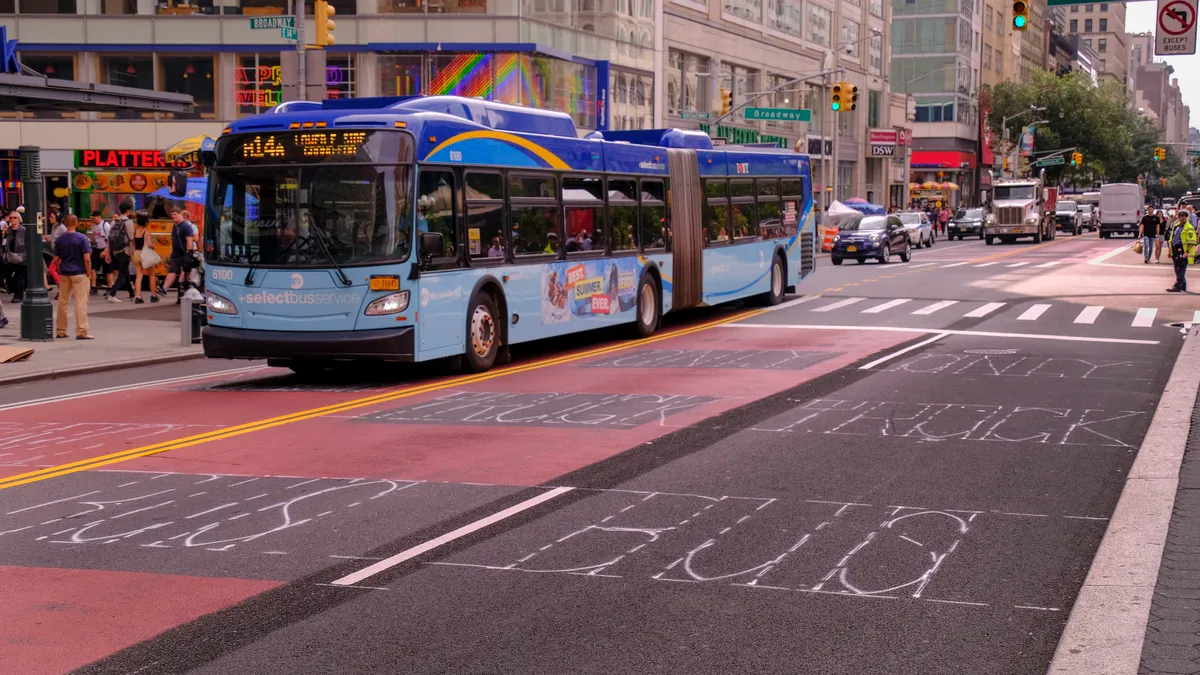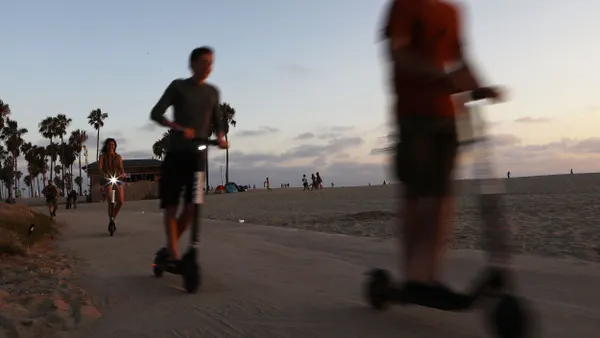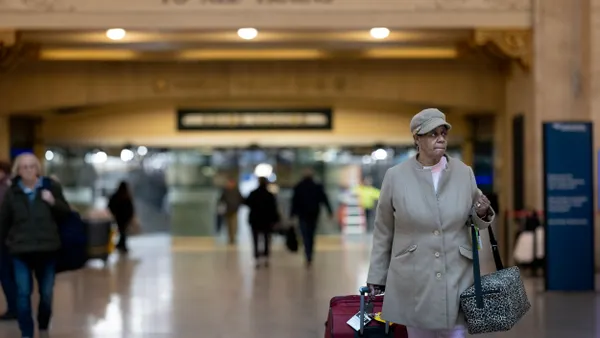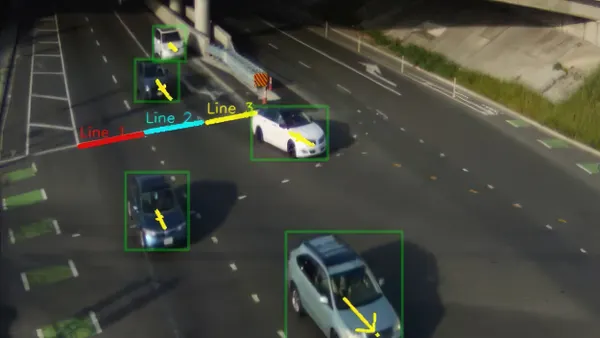Cities wanting to increase transit ridership and reduce transportation-related emissions can start by installing more bus lanes; providing frequent, all-day bus service; and disincentivizing private vehicle use in dense urban areas, the National Association of City Transportation Officials urged in a report released last week.
Only a handful of states have seen public transit ridership return to pre-pandemic levels, according to TransitRecovery.com, which compiles data from the Federal Transit Administration’s National Transit Database. Fare revenue shortfalls signal a coming financial crisis for many transit agencies.
At the same time, city leaders are looking to cut carbon emissions. People traveling in private vehicles account for more than half of transportation emissions in the U.S., according to NACTO.
The report states that one bus can carry up to eight times more people than a personal car. When full, a typical 40-seat diesel bus emits 82% fewer greenhouse gas emissions per passenger mile than a single occupancy vehicle.
“High-quality bus service is the foundation for a more sustainable and equitable future,” said NACTO Chair Janette Sadik-Khan in a press release accompanying the report.
NACTO outlined three major initiatives city and transit leaders should take to improve bus service:
- Offer frequent all-day bus service: use existing resources to run buses every 15 minutes; increase late-night service; redesign bus networks to expand access to neighborhood jobs and destinations and eliminate redundant routes; and invest in more service through new funding from local or regional taxes passed through ballot initiatives.
- Redesign streets to prioritize bus service: add dedicated bus lanes; implement transit signal priority; adjust bus stops to reduce travel time; and make easy infrastructure improvements such as curb ramps at stops.
- Adopt local policy reforms that support transit: determine parking fees based on the demand for curb space, parking or vehicle storage; implement policies that discourage driving during peak periods; eliminate policies that promote an over-supply of parking; and support reforms that enable increased housing and mixed-use development.
The NACTO report notes that local leaders, local transportation departments and transit agencies make almost all decisions about bus service, enabling fast action on making the recommended changes.
For example, faced with the need to shut down a major subway line for repairs this month, Boston quickly created dedicated bus lanes and implemented parking restrictions along several major streets to allow for temporary shuttle bus services.
The report also cited several successful implementations of these strategies:
- In New York City, the 14th Street busway cut transit travel times in half and increased ridership by 17% in just two months.
- In Minneapolis, transit signal priority, which gives preference to transit vehicles at an intersection, reduced bus travel times by 4% to 15% during peak periods.
- New York is moving toward being the first city in the U.S. to institute congestion pricing, with projected revenue going toward the Metropolitan Transportation Authority’s capital budget plan.











